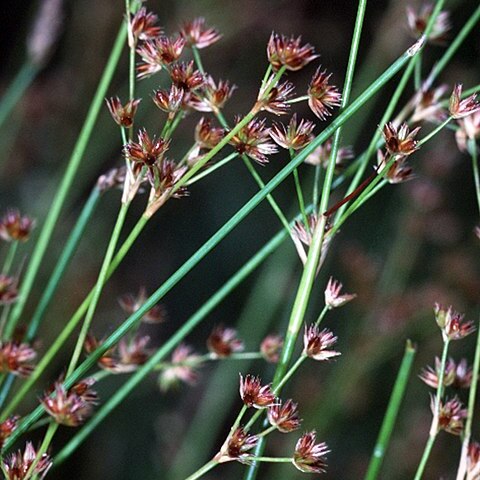Stems cespitose, erect, slender, 2–8 dm; lvs terete, septate, 1–3 mm thick; infl rarely congested, usually narrowly ovoid or pyramidal, 5–12 cm, less than half as wide, with (3–)5–20(–50) hemispheric or broadly obpyramidal heads 6–10 mm thick, each with (5–)10–50 eprophyllate fls; tep green or stramineous, lance-subulate, subequal, 2.6–3.9 mm, at least the sep broadly scarious-margined, in the lower half; stamens 3(6), shorter than the tep; fr stramineous or light brown, unilocular, about equaling the tep, trigonously ovoid-prismatic, 2.8–4 mm, acute or rarely obtuse, mucronate; 2n=40. Wet soil, meadows, shores, and low woods; Me. and N.S. to Wis., s. to Fla. and Mex.; B.C. to Oreg.
Strictly erect tufted perennial, commonly reddish-tinged. Stems 30-80 cm high, distinctly septate internally just below inflorescence. Leaves terete or ± compressed with distinct transverse septa. Inflorescence very variable, 3-20 cm long, open, much-branched with 6-10-flowered clusters at ends of branches. Tepals 2.5-3.5 mm long, ± equal, narrow-lanceolate, stiff, acuminate. Stamens 3. Capsules 2.5-3.5 mm long, = or slightly > tepals, narrow, acute, shortly beaked, straw-coloured to brown.


